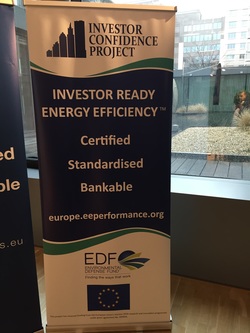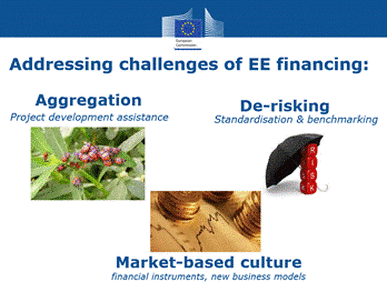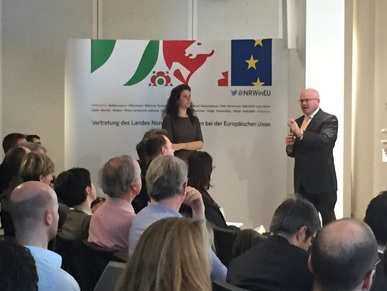
‘Let the public sector learn from their investments’, said Hodson, referring to the group of public sector-led projects that have used successfully EU grant funding to leverage private investment into retrofit programmes. The ratio of public (grant - known as project development assistance or PDA) funding to further investment in energy efficiency projects ranges from 1:15 up to 1:50 and has proven to be an effective use of public funds, especially for cash-strapped public authorities.
Publicly owned or occupied buildings represent about 12% of the EU building stock[1], and with more than 6 000 signatories to the dynamic Covenant of Mayors initiative and a host of legislative drivers, the pressure is on for the public sector to take an exemplar role – and attract private capital to make up for the shortfall in public investment which has declined more than 20 percent across Europe since 2008.
Some of the policy push comes from the Energy Efficiency Directive, which is under review this year. ‘We’re looking for ideas’ said Hodson, and it’s no secret that the European Commission’s Directorate-General for Energy will be expecting input from contracts in which the ICP Europe team is involved. Hodson cited the importance of ICP Europe in tackling the barriers to mass scale investment into energy efficiency.

These ideas are closely aligned with the goals of the Investor Confidence Project. ICP Europe launched in Brussels just one year ago, and its central role in Investor Days shows that it is already at the forefront of the European movement on energy efficiency financing – a diverse group which includes policymakers, activists, bankers and project developers.
Degen emphasized the need to drive demand in the marketplace, and flagged up the significance of Buildings Day in the COP - next stop COP22 in Morocco. She said that UNEP FI are pushing for ‘some kind of a ratings agency’ (more potential for ICP here, perhaps), and also mentioned ongoing work at UNEP FI on a standardised energy services contract for utilities.

And from there on out it was ICP’s show, as ICP Europe project director Panama Bartholomy hosted three successive panels, which included Lada Strelnikova (Deutsche Bank), Manuel Dueñas (European Investment Bank), and Sebastian Carneiro (CFA, SUSI Partners) among others. Led by Bartholomy, participants greeted the money with whoops and hollers. The bankers seemed surprised but shyly pleased with this reception.
Carneiro pointed up the staggering difference between the public sector energy performance contracting market in the US (EUR 6 billion) and Europe (EUR 175 million), and mentioned that categorizing buildings as infrastructure may be a key step (a point that was also echoed by Degen and Amber Green’s Alex Gilbert who manages the London Energy Efficiency Fund). The nascent municipal bond movement in Europe could also play a big role here.
This week, ICP Europe release a full set of building Performance Protocols – which are already being used in the UK, Germany and Portugal.
Bartholomy says, ‘It’s time for energy efficiency to realise its potential. With these Protocols the European market now have the tools they need to communicate the safety of standardised projects and manage owner and investor risk. The resulting investment in projects will build the business case we need to allow the institutional investors into the game and only then can we start to see the path towards meeting Europe’s energy goals.’
Making money flow – strategies to increase energy investments in the European building sector, February 22-23, Brussels, was organised by BPIE, IEA-EBC Annex 61: Development of Business Models and Technical Concepts for Deep Energy Retrofits, KEA, and ICP Europe, in partnership with The Covenant of Mayors, the Climate Alliance and the CITYnvest Project.

 RSS Feed
RSS Feed




